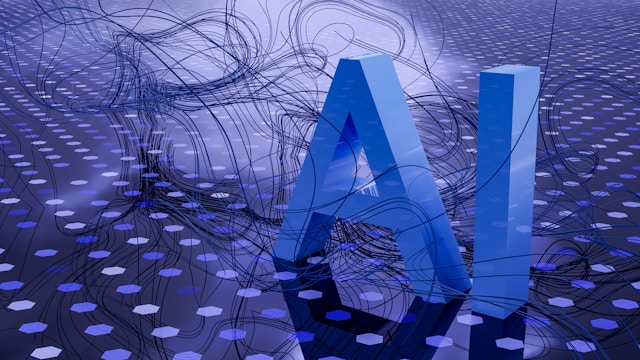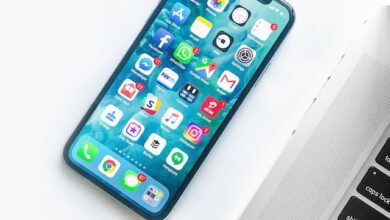The Power of AI Translation and Generative AI

It is impossible to overestimate the importance of language translation in our increasingly interconnected society, where international contact is the rule rather than the exception.
Language translation is essential to a linked and globalised society because it can facilitate cross-cultural cooperation, bridge language gaps in international economic operations, or just make diverse content more widely accessible.
In this blog, we’ll take a look at how Generative AI-powered AI translation is changing the language landscape and advancing the idea of a time when language barriers won’t stand in the way of cross-cultural communication and comprehension.
Understanding AI Translation
A key component of artificial intelligence is AI translation, which is the dynamic process of translating text or speech between languages with the least amount of human involvement. Its importance in the connected world of today cannot be emphasised, as it promotes international trade, eases cross-border communication, and improves access to knowledge and culture.
The history of artificial intelligence (AI) translation begins in the middle of the 20th century, when innovators like Warren Weaver first proposed using computers to translate languages. Machine translation was made possible by early systems, like the Georgetown-IBM experiment in 1954. Nevertheless, idiomatic idioms, natural language complexity, and contextual subtleties proved difficult for conventional rule-based translation systems to handle. Due to these difficulties, AI translation developed over time, finally incorporating generative AI and large language models (LLMs) to completely transform the industry.
Role of Generative AI in Translation
Large Language Models (LLMs)-powered generative AI has brought in a new era of translation. Fundamentally, generative AI is the ability of machines to produce text that mimics that of a human, which makes it perfect for tasks involving language translation. LLMs with potential, like Chat GPT, Bard, and BERT, are a perfect illustration of this technology.
How LLMs Work?
Pre-training and fine-tuning comprise the dual process that LLMs use to function. Models are trained on huge amounts of text data during the pre-training stage in order to learn grammar, vocabulary, and contextual relationships across several languages. They gain an extensive knowledge of language throughout this time. Next, by subjecting the model to labelled data, fine-tuning adapts the model for particular tasks, like translation.
Advantages of LLMs in Translation
There are many advantages of using LLMs in translation. These models are quite good at handling the nuances of different languages, comprehending context, and idiomatic expressions. Even if they are not specifically trained for them, their multilingualism allows for smooth translation between language pairs. Moreover, over time, their flexibility and ongoing learning improve the quality of the translation.
Among LLMs, Chat GPT stands out and has contributed significantly to translation work. Its remarkable multilingualism, context awareness, and fluency have made for incredibly accurate and natural-sounding translations. Because of its generative characteristics, creative translation apps and services have been motivated to be developed.
How Generative AI Transforms Translation?
Improving Translation Quality and Accuracy: The use of Large Language Models (LLMs) in translation procedures has resulted in a significant improvement in both quality and accuracy. LLMs, like GPT-3, are excellent in preserving context, catching subtleties, and producing translations that flow easily and fluently. As a result, meaning is preserved across languages with translation output that approaches human skill.
Real-Time Translation Services and Applications: The potential for real-time translation services and applications has been unlocked by generative AI, which is fueled by LLMs. LLMs are facilitating seamless communication across language barriers in a variety of contexts, including live video conferencing and real-time language conversion when travelling abroad. They instantly process written or spoken language, enabling efficient international communication.
Multilingual Voice Assistants and Chatbots: Generative AI is being used more and more by voice assistants and chatbots for multilingual communication. Regardless of the user’s linguistic background, these AI-driven interfaces use LLMs to interact with users in their preferred language, respond to inquiries, and help with tasks. This expands the reach of these digital helpers while also improving user experiences.
Actual Success Stories
Generative AI has already had a big impact on the actual world. Artificial Intelligence (AI)-powered translation technologies, for example, are helping doctors and patients communicate effectively by crossing language barriers in the healthcare industry. AI translation is being used by e-commerce platforms to increase the size of their global clientele. In order to reach new audiences, media and content producers are offering their content in numerous languages.
The Bottom Line
A revolutionary era in AI translation has been revealed by generative AI and its large language models. Unmistakably, it has revolutionised the speed, quality, and fluency of translation services. Language barriers can now be used as doors to communication and understanding rather than as insurmountable hurdles.
Importantly, the purpose of generative AI is to augment human capabilities rather than to replace them. It gives us strong tools that enable accuracy and effectiveness when translating. It increases our capacity for international communication, promoting variety and unity.
Let’s embrace the potential of AI translation to make the globe a more connected place as we navigate its ever-evolving landscape. We can make the most of this incredible tool by being aware of its subtleties and remaining informed, which will help to ensure that linguistic variety remains an asset rather than a hindrance in the future.



